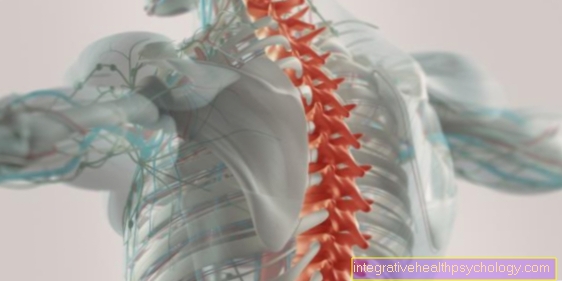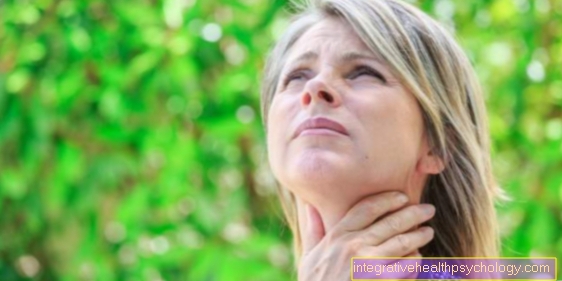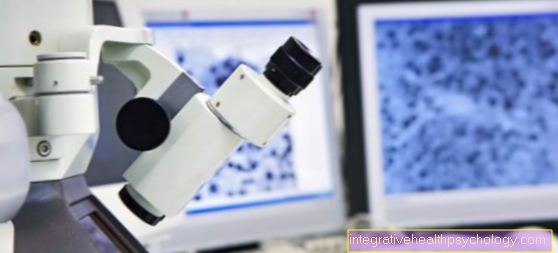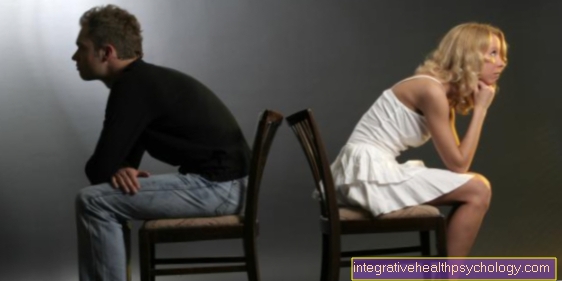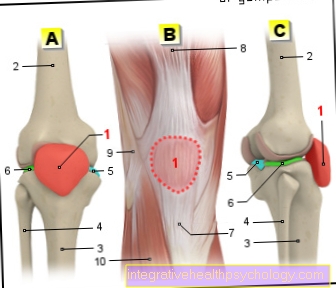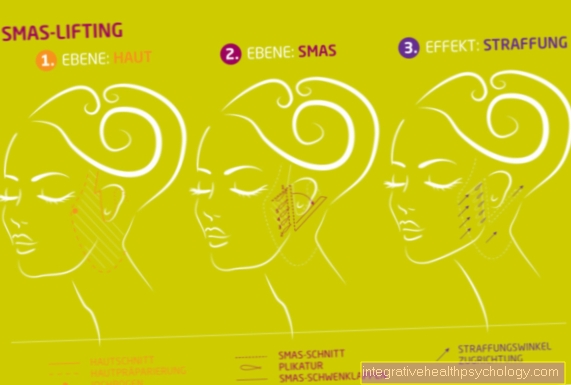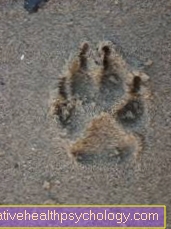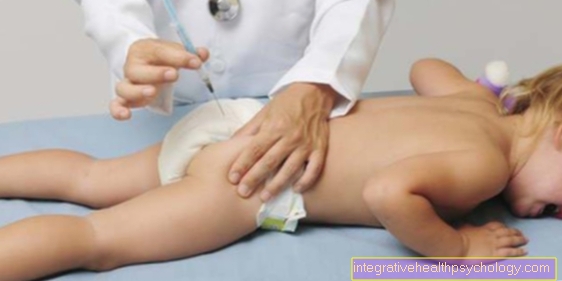Course of osteoarthritis
What is the course of osteoarthritis?
The course of the disease arthrosis usually extends over many years. The patient is usually not aware of the onset of the illness. Symptoms only appear when the osteoarthritis has progressed.
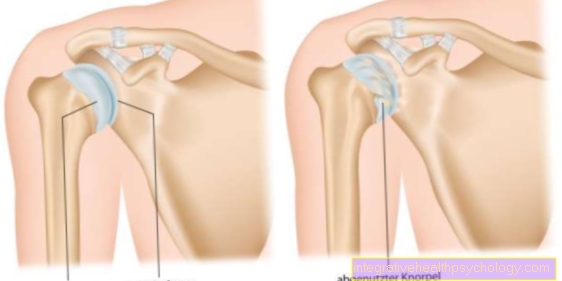
Early stage
The starting point of every osteoarthritis is damage to the cartilage coating, the so-called "Cartilage damageThis damage is often limited to a small area at first. In addition, it is still superficial X-ray image first compaction of the bone. It is always about Bone districtsthat is right under the sick cartilage lie. These additional changes in the bone are a decisive sign of the early stages of osteoarthritis. Without these bone changes, there is only "cartilage damage", but not "osteoarthritis". Osteoarthritis therefore always means cartilage damage with bone changes.
Intermediate stage
There can be many years between the course of osteoarthritis from the "early stage" to the "late stage". Many osteoarthritis patients are therefore in what is known as an intermediate stage. Your changes are therefore stronger than in the early stage, but even less than in the late stage.
At this stage, activated osteoarthritis can also occur, which can accelerate joint wear.
Late stage
In the late stages, the articular cartilage in the diseased area is not only diseased and damaged, it is even completely worn off and has disappeared. As a result, the now exposed bone rubs directly on the bone on the opposite side of the joint. In the X-ray you can see that the Touch the bones of the joint partners directly. The so-called joint space has therefore disappeared. The bone has also changed compared to the early stage.
Typical changes in the x-ray image in osteoarthritis
- Narrowing of the joint space as an indication of a reduction in cartilage thickness
- Change in the bone under the cartilage damage; it becomes denser and therefore more visible in the X-ray image (sclerosis (White)).
- Bone attachments; the joint reacts to the damage with an increase in area, so-called Osteophytes. The affected person finds that their joints are larger and distended. These bone spikes can also touch each other during certain movements and trigger further pain.
- Cyst formation; cysts (fluid-filled cavities) often form near the osteoarthritis
- Shape change; the joint loses its original shape, the joint loses its congruence, it becomes "crooked".
The soft tissues are also affected by osteoarthritis (Muscles, tendons, ligaments etc.) in the vicinity of the joint.
By protecting the painful joint, the muscles become weaker and less flexible. Depending on the change in shape of the joint, certain ligament structures shorten while others are overstretched. The result is an instability of the joint. The general risk of accidents increases. The osteoarthritis continues to increase.
The joint capsule becomes rigid and the range of motion for the joint decreases.
Due to the formation of fluid in the joint mucosa (Synovia) synovial hernias or cysts can form (e.g. Baker's cyst of the knee joint).
By protecting the affected joint, incorrect posture and incorrect loading of other joints arise. This makes it clear that osteoarthritis is not a disease that is limited to the affected joint alone.
Appointment with ?

I would be happy to advise you!
Who am I?
My name is dr. Nicolas Gumpert. I am a specialist in orthopedics and the founder of .
Various television programs and print media report regularly about my work. On HR television you can see me every 6 weeks live on "Hallo Hessen".
But now enough is indicated ;-)
In order to be able to treat successfully in orthopedics, a thorough examination, diagnosis and a medical history are required.
In our very economic world in particular, there is too little time to thoroughly grasp the complex diseases of orthopedics and thus initiate targeted treatment.
I don't want to join the ranks of "quick knife pullers".
The aim of any treatment is treatment without surgery.
Which therapy achieves the best results in the long term can only be determined after looking at all of the information (Examination, X-ray, ultrasound, MRI, etc.) be assessed.
You will find me:
- Lumedis - orthopedic surgeons
Kaiserstrasse 14
60311 Frankfurt am Main
You can make an appointment here.
Unfortunately, it is currently only possible to make an appointment with private health insurers. I hope for your understanding!
For more information about myself, see Lumedis - Orthopedists.


